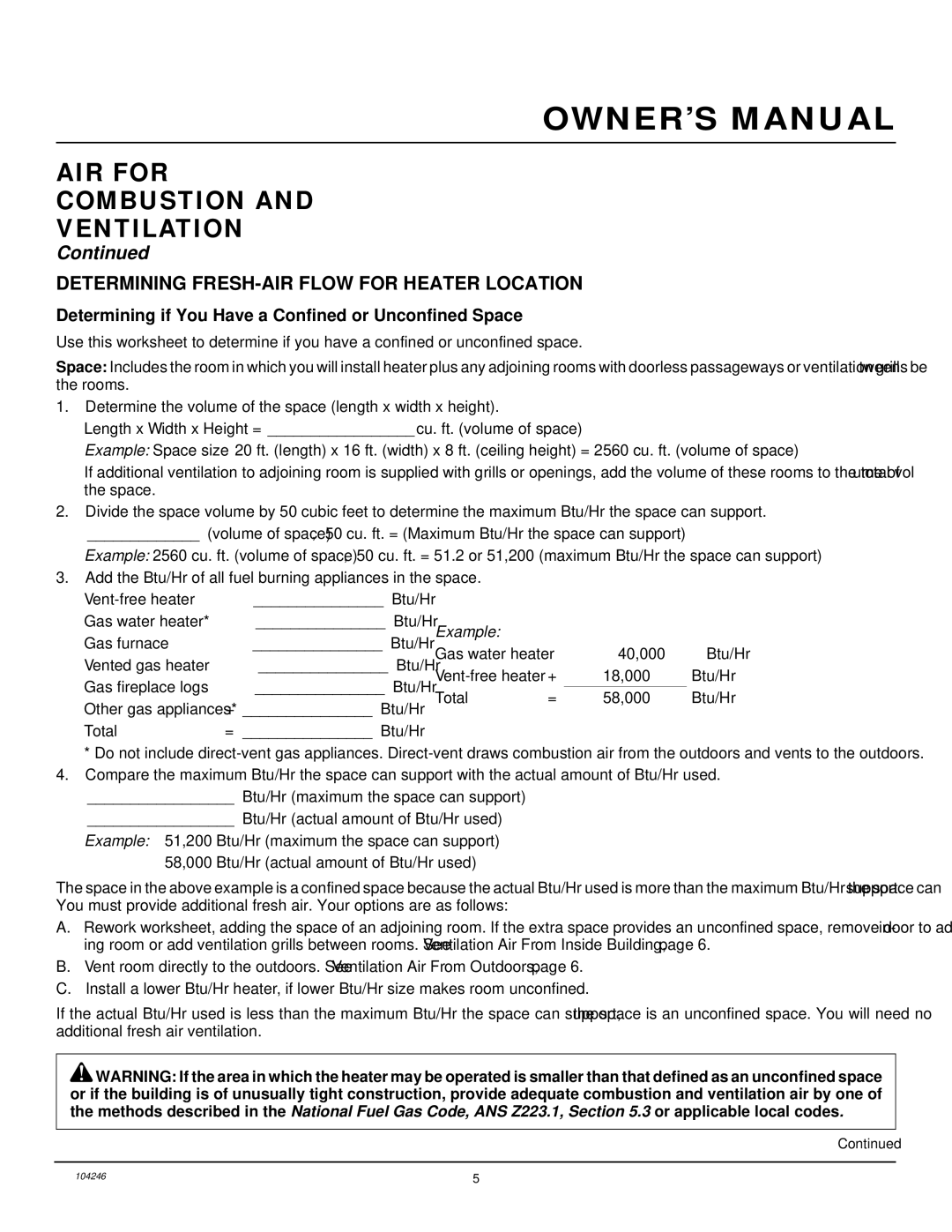VN2550ITB, VN1800ITB specifications
The Vanguard Heating VN1800ITB and VN2550ITB are high-efficiency heating solutions designed to cater to the diverse needs of residential and commercial spaces. These units exemplify advanced technology, offering reliable and consistent warmth while prioritizing energy efficiency.The VN1800ITB model is engineered to deliver a powerful heating capacity of 18,000 BTUs, making it suitable for medium-sized rooms. It boasts a sleek design that allows for seamless integration into various decor styles. One of the standout features of the VN1800ITB is its innovative variable-speed blower, which not only enhances comfort by maintaining even temperatures but also reduces energy consumption. The blower adjusts its speed based on demand, resulting in quieter operation and improved efficiency.
In addition, the VN1800ITB includes a state-of-the-art digital thermostat that enables precise temperature control. Users can easily program heating schedules, leading to further savings on energy bills. The inclusion of a high-quality air filter improves indoor air quality by trapping dust and allergens, making it an ideal choice for households with allergy sufferers.
On the other hand, the VN2550ITB offers an impressive heating capacity of 25,000 BTUs, making it suitable for larger areas. This model incorporates similar advanced features as its counterpart, including the variable-speed blower and digital thermostat. However, it also features enhanced insulation, which minimizes heat loss and increases overall efficiency. The VN2550ITB is equipped with advanced safety features, including overheat protection and a flame rollout switch, ensuring the unit operates safely even in demanding conditions.
Both models utilize cutting-edge combustion technology that maximizes warmth while minimizing emissions. This commitment to environmental responsibility not only helps users meet local regulations but also contributes to a greener planet.
In conclusion, the Vanguard Heating VN1800ITB and VN2550ITB combine performance, efficiency, and safety features in aesthetically pleasing designs. These heating units provide dependable warmth, programmable convenience, and a commitment to indoor air quality, making them a smart investment for those seeking effective heating solutions.

